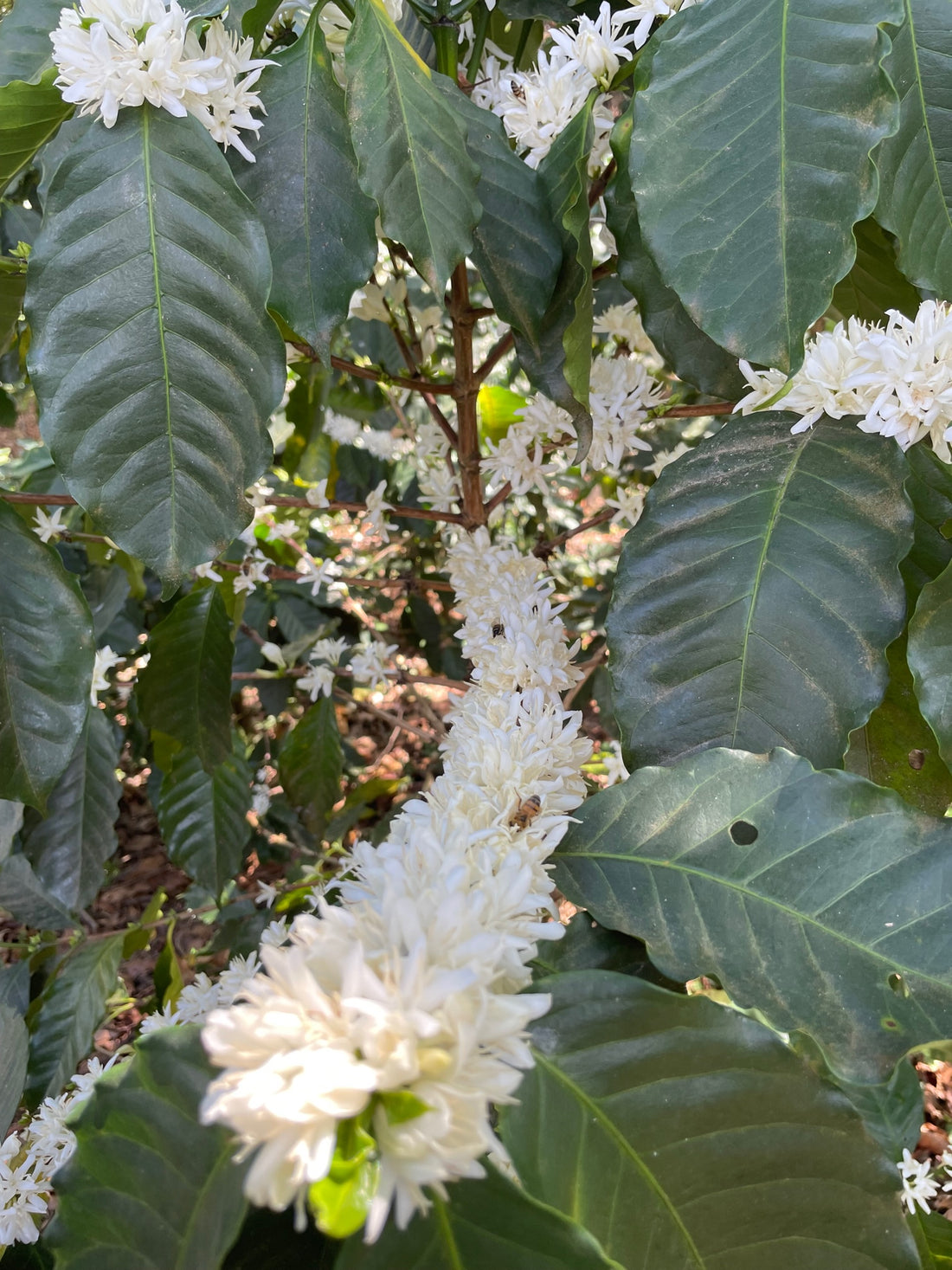
The Coffee Journey: Episode III
Share
El Salvador Trip!
We continue the journey of our coffee by highlighting the activities that
took place at the origin (the farm) during the month of March. If this is your first time reading the Coffee Journey Posts, I am documenting the process from seed to cup with a monthly write-up in order for you to immerse in the arduous journey that coffee takes to eventually get to you.
March brought the first showers of the year as 6mm of desperately needed
rain wetted the land. Cloudy days, cooler temperatures and a bit of rain
make the perfect recipe for coffee shrubs to come into full bloom. The
white flowers blanket the landscape and the whole area comes alive with
the deafening buzzing sound of thousands of bees sucking on the sweet
nectar of the coffee flowers. Butterflies add a spectacle of colour as they
flap their wings open while moving from flower to flower in a drunken
stupor. There is a complete sensory overload as not only the sounds
around you but also the scents in the air, reminiscing of jasmine, inundate
the landscape. It is truly a magical time to visit a coffee farm and I was
lucky enough to be in the “right place at the right time”.


I managed to escape for a few days down to El Salvador and thus have
plenty to report.
So, the crew worked most of the month on applying an anti-stress foliar
application, as well as bokashi to the young trees to the tune of about 3
pounds per tree. Bokashi is what we call the soil amendment that we
prepare by fermenting/composting a mix of organic matter (coffee pulp,
chicken litter) with molasses, biochar, rock dust (minerals) and native
micro-organisms. We produce around three to four tons of bokashi per
year and apply it throughout the farm to improve soil and ultimately coffee
quality. We began applying bokashi into the soil about 8 years ago and it is
a practice we have continued since we have seen an improvement in
quality at the farm. I only wish we could produce more, but the logistics
today somewhat limit our ability.

Lastly, there is an area of the farm that will be replanted and a team of two,
continue to draw the contour lines and stake the site of new trees. Once
the layout has been completed, holes will be dug.
I believe I have mentioned before that it is somewhat of the quiet season
right now at the farm. So we are currently focused on the key activities to
support the trees during their growth phase.
A few highlights from the trip. Overall, the plantation is looking great. The vast majority of the trees seem to be handling the dry season well and most
look healthy (dark green colour leaves and plenty of leaves on the trees).
We should expect a second flowering as the rain was not enough to induce
a huge bloom but only a partial one.

Finally, I was glad I got a chance to catch up with some good friends during
the trip. We coordinated to meet with Dale Harris and Roland Glew from
Ozone Coffee / Hasbean Coffee in the U.K. Ozone purchases all the
coffee from the farm, except for the small micro-lots that we bring to
Canada.
Dale and I met a while back in 2015 when he competed in the UK
Barista competition with our farm’s coffee. Unfortunately, he finished
second that year but we have been good friends ever since. Two years
later, Dale went on to win the World Barista Championship in 2017.
After a long overdue trip to El Salvador, we finally managed to visit the farm
together, cup some amazing coffee from the most recent harvest (October to March) and have a great time. I am glad to report that there are some amazing-tasting coffees that we expect to get for Crickle Creek in September/October.

And for those wondering, yes…there is such a thing as a Barista
Championship. It is a pretty elaborate competition that is fun to watch if
you are into coffee and showmanship.
Till the next blog post,
Alejandro
